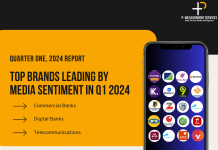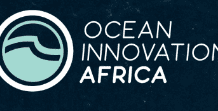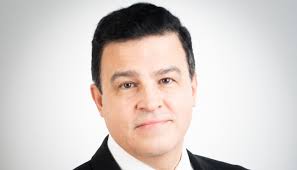Juan Visser: Regional Director, sub-Saharan Africa, Cambridge Assessment International
Education
With the unabating advancement in technology and science globally today, it has become increasingly important to encourage young learners to study Science, Technology, Engineering, and Mathematics (STEM) subjects.
In recent times, STEM has received considerable attention in Nigeria, primarily owing to the Employment gap in this field and the need to expedite and meet the technological developments of the modern time. However, despite so much emphasis being placed on its importance, the adoptionof STEM education does face some challenges, including a gap between the number of Girls and Boys studying these subjects in secondary school.
Data recently released by Cambridge Assessment International Education, suggests that sixteen isthe crucial age to encourage young women to pursue STEM. According to the data, while male andfemale students perform equally during Cambridge IGCSEs, there is a disconnect between whatthey choose to study after the age of 16.
In Nigeria today, girls are taking more IGCSEs, with many showing an interest in taking up STEM careers. The data indicates that since 2009 more than 15,700 girls have taken STEM IGCSEs/OLevels in the country with 56,800 exam entries from girls in STEM IGCSEs. This could suggest that on average, each female student takes 3-4 STEM courses at IGCSE.
Since 2008, the number of IGCSE entries for STEM courses from female students has risen from 46% to 48% of the total entries. This increase can also be attributed to the government and educators recognising the relevance and importance of STEM education in the development of society.
More than ever, education organisations and individuals have reiterated the need for educators to make learning not only fun, but also impactful for students, as well as preparing them for the rigors of higher education.
Women are currently a little underrepresented in industry sectors in Nigeria that require employees to have strong knowledge and skills in the fields of mathematics, physics, chemistry and technology. This is perhaps in part due to social and cultural factors, including cultural beliefs, tradition, the educational background of parents, and religious beliefs.
However, with the increasing need to provide students with the skills and knowledge they need in a technologically advancing world, more schools have integrated STEM education into their curriculum.
Encouraging and inspiring young women to take up STEM
Women have worked on some of the world’s most important scientific discoveries and advances like
chemist Rosalind Franklin, whose work on molecular structures was fundamental to the understanding of DNA. In Nigeria, scientific innovations are often male-dominated, however, anumber of women have made remarkable contributions and are great role models for young aspiringfemale scientists and mathematicians.
They include Professor Alele-Williams who made her indeliblemark in history after becoming the first Nigerian female to earn a Ph.D. in Mathematics, the firstfemale professor of Mathematics and the first female Vice-Chancellor of a university in Nigeria.
Encouraging more young women to study STEM courses and take up careers in STEM is vital if wewant to see more pioneers like Alele-Williams and help to address the current imbalance betweenthe number of girls and boys pursuing STEM subjects post 16 in Nigeria.
The Move to Further Education
At Cambridge, the newly released data reinforces that the run-up to post-16 education is the crucialmoment to encourage new generations of female scientists, engineers, programmers, andmathematicians.For example, while studying Cambridge IGCSE Computer Science, male and female students havehistorically achieved equal success on both the programming task – similar to coursework – and the exam.
Any stereotypes formed about the type of student who succeeds at these courses are quickly
broken when considering the equality of the results students achieve in their exams. The challenge is encouraging young women to overcome the stereotypes about science and mathematics and choose these courses in the first place.
Globally, nearly two-thirds of male and female students take STEM courses at Cambridge IGCSE. Yet, at Cambridge International A Level, when many have the choice of which three or four subjectsthey want to focus their studies on, we see quite a drop in the number of STEM subject entries by female students.
Currently only 27% of female students taking STEM subjects at IGCSE go on to study a STEM course at A Level.
Many female students choose to focus on other Cambridge International A Level subjects, while the proportion of male students studying STEM remains steady. The situation does vary from country to country, but the international outlook shows there is still a way to go before young women pursue STEM Cambridge International A Levels in equal numbers to young men.
We recognise that the content of our syllabuses plays an important part in whether young people choose to continue studying particular subjects beyond IGCSE. Making choices about what to study post 16, is often the first point at which young women feel empowered to choose a STEM pathway, as the right courses offer a rewarding mix of challenge and satisfaction.
Since 2009, there have been more than two million entries from young women across the world for Cambridge IGCSE STEM courses, and they represent about 30% of total entries across all subjects. Rigorous IGCSE and A Level courses and globally recognised assessments help prepare students for bright careers in science and mathematics.
It is also important that we ensure assessments for our qualifications provide equal opportunities to achieve for all students – regardless of background or gender. When we develop exam papers for international students, we ensure the content is fair, can be understood universally, and that it avoids bias and cultural differences. Making sure we use neutral context settings within papers is really important so that any scenarios and questions are as relatable and appropriate for all students.
For us all to continue to advance and develop new global technologies and innovations in every industry sector, we need to continue to educate and encourage the best scientists and mathematicians. It is therefore essential that we continue to encourage young people, both male and female, to study STEM courses beyond 16 and attract them to pursue STEM careers in the future.
At Cambridge International, we recognise there is still a gap between the number of female students taking STEM courses post 16 and their male peers. It is therefore vital that we continue to do everything we can to break down any long-standing stereotypes associated with STEM subjects at Cambridge International A Level and encourage more young women to choose these subjects.
We can do this in many ways, from recognising and rewarding young scientists; promoting the work of successful women scientists and mathematicians; and ensuring STEM qualifications remain interesting, relevant and an attractive choice for all students regardless of their gender.















































